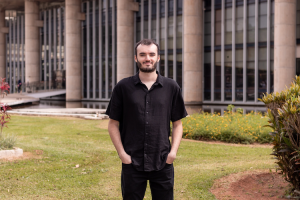 Prelecionista: Danilo Oliveira Ramos
Prelecionista: Danilo Oliveira Ramos
Orientador: Olinto Liparini Pereira
Data: Terça, 13/5/2025, 16h
Local: Auditório do ESB
Resumo: Host manipulation is frequently observed in interactions with a wide range of organisms. Manipulation of insect behavior by fungi, such as that observed by Ophiocordyceps unilateralis, which transforms the ant host into a living puppet, has gained attention in mainstream media, becoming a part of games and series. However, these characteristics are not observed only in these fungal genera. Other species belonging to the phyla Ascomycota and Entomophthoromycota exhibited similar alterations in insect behavior. These manipulations demonstrate the ‘extended phenotype’ concept, in which fungal genes exert control beyond their own cells to shape host morphology and ecology, thereby enhancing their own transmission. This concept, conceived by Dawkins, is widely applied to the relationships between animals and their parasites. However, host manipulation by fungi is not restricted to insects alone. This leads to the main question of this seminar: can plants be manipulated? Therefore, we discuss the ecological aspects of the interactions between fungal and plants. We will explore the physiological manipulation of plants by fungi and the importance of insects as supporting actors in some of these interactions to spread the parasite. Fungal manipulation often leads to striking morphological alterations in plants, for example, the formation of pseudoflowers, where fungi such as Fusarium xyrophilum induce flower-like structures composed of fungal tissue or modified host organs. These pseudoflowers mimic real flowers in color, UV reflectance, and scent, attracting pollinators that inadvertently disperse the fungal spores. Fungal manipulation of plants involves a complex interplay of physiological and morphological changes orchestrated through hormonal, metabolic, and molecular hijacking. These adaptations not only ensure fungal survival but also highlight the remarkable plasticity of plant-pathogen interactions.
